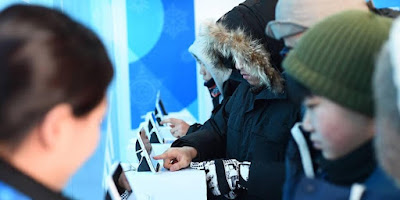By now, it is clear that 5G is more than an incremental increase in speed and bandwidth, it’s a fundamental transformation within the network to leverage the full potential of the digital revolution.
Intel aims to advance its 5G technology and processors to enable a vision of the world that will connect billions of devices including cars, homes, buildings and cities and enable a new generation of connected experiences.
Ahead of the 2020 Olympic Games in Tokyo, Intel has announced that it will partner with Japanese telecommunications carrier NTT DoCoMo on providing 5G coverage and technology for the event.
Key highlights include:
- High-Resolution Video: Fans can expect 360-degree, 8K-video streams that may showcase real-time action across high-resolution devices at Olympic venues. Fans may be able to take in the action using virtual reality powered by Intel® True VR from their TV, headset or wireless device, provided through rights holding broadcasters, running on transformed 5G networks capable of delivering massive amounts of data at multi-gigabit speeds.
- Smart city sensors and fully connected cars: These could change the way fans physically move through the city of Tokyo. Due to the heightened intelligence in devices and at the edge, the 5G network will tackle unique data-intensive workloads, such as pervasive facial recognition, useful for everything from stadium access to threat reduction.
- Athletes: Contestants will also gain a new edge from 5G as they train and compete. Access to rich data and analytics will let them course-correct their training programs. Wearables, smart eHealth equipment and AR/VR simulations, all optimized over a 5G network, could leverage artificial intelligence to help competitors step up their game.
For more details, kindly refer to the full blog post authored by Aicha Evans, senior vice president and chief strategy officer at Intel Corporation.
For the LATEST tech updates,
FOLLOW us on our Twitter
LIKE us on our FaceBook
SUBSCRIBE to us on our YouTube Channel!






